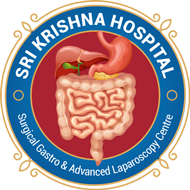What is Bile duct Cancer?
Bile duct Cancer , also known as Cholangiocarcinoma, is a type of cancer that forms in the slender tubes (bile ducts) that carry the digestive fluid bile. Bile ducts connect your liver to your gallbladder and to your small intestine.
Cholangiocarcinoma can be divided into different types based on where the cancer occurs in the bile ducts:
- Intrahepatic cholangiocarcinoma occurs in the parts of the bile ducts within the liver and is sometimes classified as a type of liver cancer.
- Hilar cholangiocarcinoma occurs in the bile ducts just outside of the liver. This type is also called perihilar cholangiocarcinoma.
- Distal cholangiocarcinoma occurs in the portion of the bile duct nearest the small intestine. This type is also called extrahepatic cholangiocarcinoma.
What are the causes of Bile duct Cancer?
Cholangiocarcinoma happens when cells in the bile ducts develop changes in their DNA. A cell's DNA contains the instructions that tell a cell what to do. The changes tell the cells to multiply out of control and form a mass of cells (tumor) that can invade and destroy healthy body tissue. It's not clear what causes the changes that lead to cholangiocarcinoma.
Risk factors
Factors that may increase your risk of cholangiocarcinoma include:
- Primary sclerosing cholangitis. This disease causes hardening and scarring of the bile ducts.
- Chronic liver disease. Scarring of the liver caused by a history of chronic liver disease increases the risk of cholangiocarcinoma.
- Bile duct problems present at birth. People born with a choledochal cyst, which causes dilated and irregular bile ducts, have an increased risk of cholangiocarcinoma.
- Older age. Cholangiocarcinoma occurs most often in adults over age 50.
- Smoking. Smoking is associated with an increased risk of cholangiocarcinoma.
What are the symptoms of Bile duct Cancer?
Signs and symptoms of cholangiocarcinoma include:
- Yellowing of your skin and the whites of your eyes (jaundice)
- Intensely itchy skin
- White-colored stools
- Fatigue
- Abdominal pain on the right side, just below the ribs
- Losing weight without trying
- Fever
- Night sweats
- Dark urine
What are the treatment options for Bile duct Cancer?
Treatment for bile duct cancer depends upon where the cancer is located and whether it is possible for it to be completely removed by surgery. Unfortunately, those affected with this cancer tend to be older and may be unable to tolerate and recover from a significant operation. The decision regarding surgery needs to be individualized for the specific patient and their situation.
Other treatment options tend to be palliative, not curative, and are meant to preserve quality of life. Chemotherapy and radiation therapy may be options that are suggested to treat bile duct cancer.





